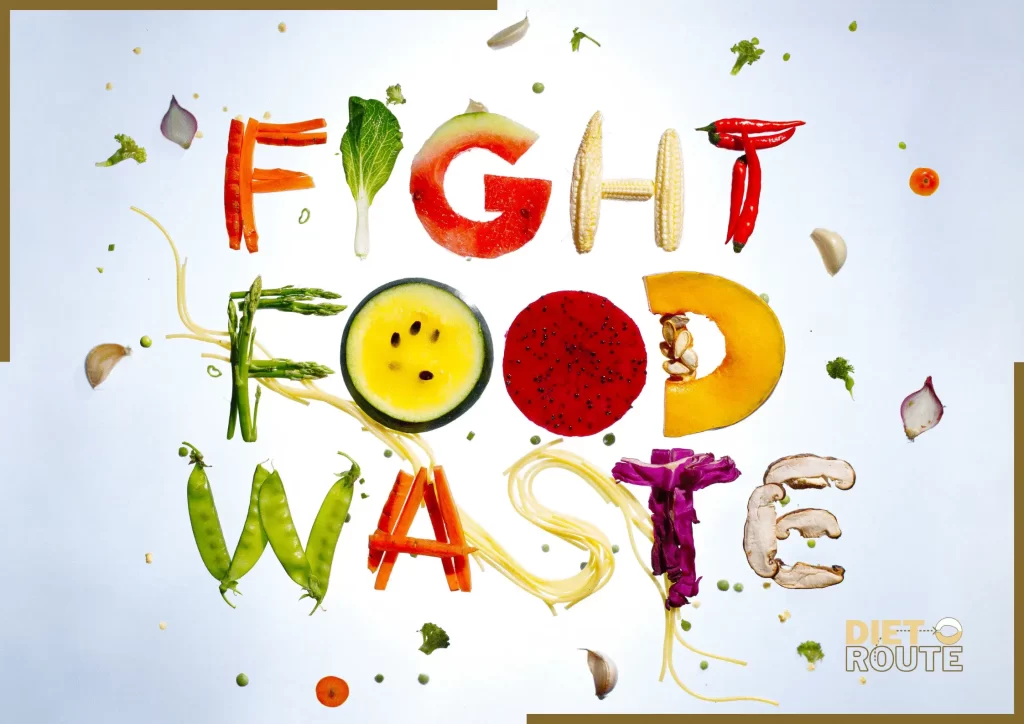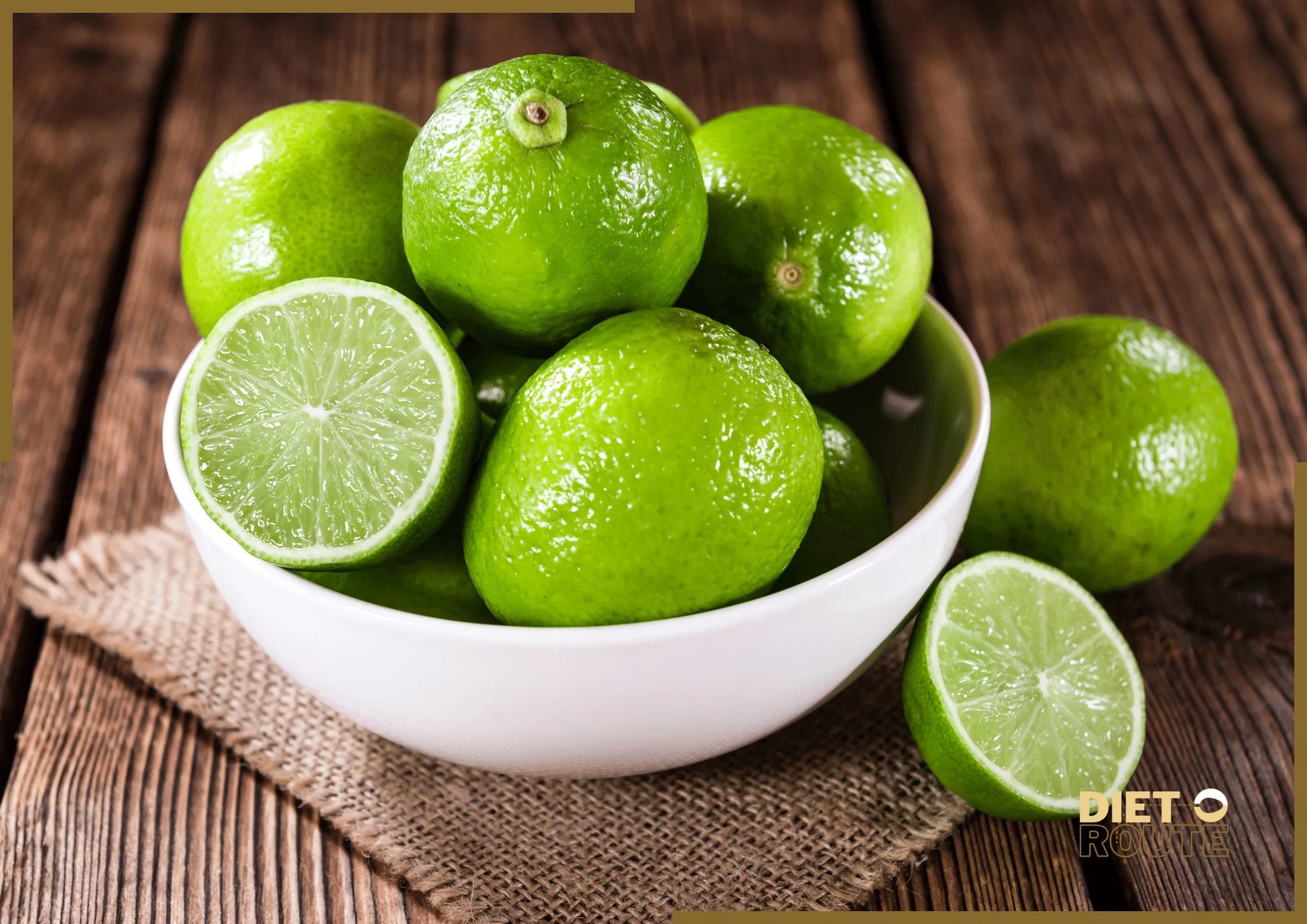Table of Contents
Introduction
The demand for sustainable practises is greater than ever in today’s world, which is changing so quickly. It is crucial to address the problem of food waste and its impact on the environment as we work to save our planet and provide a brighter future for future generations. We may actively contribute to lowering waste, preserving resources, and reducing our carbon footprint by adopting a sustainable diet.
Making informed choices and taking significant action require an understanding of the connection between food waste and environmental impact. The purpose of this article is to discuss the significance of a sustainable diet and offer helpful advice on how people can reduce food waste and make environmentally friendly food choices. We can help create a more resilient and sustainable food system by putting these suggestions into practise.
Join us on this adventure as we learn how to develop a sustainable diet that is good for our health and the environment. One plate at a time, let’s explore the realm of decreasing food waste and lowering our environmental impact.
Understanding the Effects of Food Waste on the Environment
Food waste is a serious problem on a global scale, with serious environmental effects. The resources used in its production, processing, packaging, and transportation are also wasted when food is wasted. This covers priceless resources like land, electricity, and water. Additionally, food waste produces greenhouse gas emissions that fuel climate change.
A third of all food produced for human consumption worldwide is wasted, according to the Food and Agriculture Organisation of the United Nations (FAO). In addition to wasting resources, this astounding quantity of waste worsens food instability and hunger in many regions of the world.
Methane, a powerful greenhouse gas, is produced when food waste decomposes in landfills. Methane is a substantial contributor to climate change because it has a far greater potential for global warming than carbon dioxide. Furthermore, using large amounts of energy and water for the production and delivery of food strains natural resources.
Having A Sustainable Diet Is Important

To combat food waste and reduce our environmental impact, adopting a sustainable diet is a vital step. We can help create a more sustainable and resilient food system by making informed choices about what we eat and how we consume it.
The main goals of a sustainable diet are to reduce waste, save resources, and advance biodiversity. It reduces reliance on resource-intensive animal products while emphasising the consumption of nutrient-rich crops. We can have a positive impact on our health, the environment, and society as a whole by implementing sustainable practises into our food habits.
A sustainable diet allows us to:
1. By making meal plans, preserving leftovers appropriately, and paying attention to portion proportions, households can drastically reduce food waste.
2. Resources can be conserved by picking foods like plant-based substitutes that take less energy, water, and land to produce.
3. Reduce greenhouse gas emissions associated with food production by choosing low-impact foods and reducing reliance on animal products.
4. Promoting different agricultural practises, such as organic and regenerative farming, aids in the preservation of biodiversity and the protection of ecosystems.
5. Improved Health: A sustainable diet that is high in fruits, vegetables, whole grains, and plant-based proteins can improve health outcomes and reduce the risk of chronic diseases.
Individuals have the ability to change the world through their daily food choices. By adopting a sustainable diet, we can spur progress and build a healthier and more sustainable future for both the earth and ourselves.
Keeping Home Food Waste to a Minimum

We can start reducing food waste at home. We can significantly impact waste reduction and increase the use of the food we purchase by implementing straightforward yet powerful measures. Here are some useful pointers for cutting down on food waste at home:
a) Plan your meals:
Plan your meals for the upcoming week and create an appropriate shopping list. This assists you in buying only what you require, decreasing the likelihood that food will go to waste.
b) Suitable storage:
To increase the shelf life of your perishable items, learn suitable storage methods. For instance, using airtight containers for leftovers and putting fruits and vegetables in the refrigerator can help food stay fresher for longer.
c) First In, First Out:
When organising your fridge and pantry, use the “first in, first out” approach. To prevent anything from being forgotten and wasted, use older ingredients and goods before opening new ones.
d) Innovative Cooking:
Use wasted items and leftovers in inventive ways. Make fresh meals out of them or freeze them for later. This not only reduces waste but also gives your meals more variety.
e) Portion Control:
When presenting meals, pay attention to portion sizes. If necessary, start with smaller servings and provide seconds. This helps reduce the amount of food that ends up in the garbage.
f) Composting:
Establish a method for composting coffee grounds, fruit and vegetable scraps, and other organic waste. These materials can be composted to create nutrient-rich soil, which will cut down on landfill waste.
Information-Based Food Decisions
Making informed food choices is a crucial component of a sustainable diet. We can promote sustainable practises and reduce our carbon footprint by taking into account the environmental impact of the foods we consume. When making food choices, keep these important things in mind:
a) Locally Sourced Produce:
Whenever possible, choose fruits, vegetables, and other food items that are produced nearby. Produce that is grown nearby frequently needs less transportation, which lowers the greenhouse gas emissions brought on by long-distance travel.
b) Seasonal Eating:
Opt for fruits and vegetables that are in season to embrace seasonal eating. Produce grown in season is not only more flavorful and fresher but also less labour-intensive to grow.
c) Organic and Sustainable Labels:
When buying food products, look for organic and sustainable labels. In order to promote healthier ecosystems, organic agricultural practises reduce the use of synthetic pesticides and fertilisers.
d) Sustainable Seafood:
To support ethical fishing methods and save marine ecosystems, choose seafood that has been sustainably sourced. You should look for certificates from organisations like the Aquaculture Stewardship Council (ASC) or the Marine Stewardship Council (MSC).
e) Plant-Based Alternatives:
Increase the amount of plant-based foods in your diet, including tofu, nuts, and legumes. The environmental impact of plant-based proteins is lower than that of animal-based proteins.
f) Mindful Packaging:
Pay attention to how the goods you purchase are packaged. Select products with minimum packaging or packaging made of recyclable or biodegradable materials.
We can support a more sustainable food system and enjoy wholesome meals by making informed food choices. Set sustainability as a top priority and support actions that save the environment and foster a healthier planet.
The Use of Seasonal and Local Produce
Local and seasonal produce has several advantages for the environment and our health. We support sustainable farming methods, reduce carbon emissions, and enjoy the freshest and most flavorful produce available when we choose to eat seasonal and locally sourced fruits and vegetables.
Consuming foods that naturally grow and ripen at particular times of the year is known as seasonal eating. We may take advantage of nature’s abundant offers and reduce our reliance on food that necessitates considerable transit and unnatural growing conditions by adjusting our meals to the seasons.
The following are the main benefits of consuming seasonal and local produce:
Seasonal produce is gathered at the height of maturity, which means it is full of vital nutrients.
a) Nutritional value:
Nutritional value A healthier diet is made possible by the higher vitamin and mineral content of fruits and vegetables that are allowed to fully develop on the plant.
b) Fresher Taste:
Produce that is obtained locally frequently arrives on our plates faster, providing optimal freshness and flavour. Seasonal eating enables us to fully appreciate the flavour of a tomato that is just picked or a strawberry that has been picked at its peak.
c) Environmental Benefits:
By selecting local produce, we reduce the carbon footprint associated with long-distance travel. It takes a lot of energy and produces greenhouse gases to import food from far away. These environmental impacts are reduced by choosing local options.
d) Support for Local Farmers:
Supporting regional farmers and the local economy by purchasing seasonal and regional produce It supports local agricultural communities, develops diversified and robust food systems, and supports food security.
e) Reconnection with Nature:
By adopting a seasonal diet, we can reestablish our connection to the earth’s seasonal cycles. It encourages respect for the seasons, the life cycle, and the value of biodiversity.
Investigate local grocery stores that emphasise seasonal and local items, farmers’ markets, and community-supported agriculture (CSA) schemes when you go produce shopping. Learn about farmers’ sustainable farming methods by interacting with them. We can feed ourselves while also feeding the world by adopting seasonal and local produce.
Choosing Plant-Based Substitutes

Incorporating more plant-based alternatives into our meals is one of the most important choices we can make for a sustainable diet. Reduce or stop consuming animal products and switch to plant-based alternatives to practise plant-based eating. Here are some reasons why choosing plant-based alternatives is good for our health and the environment:
a) Animal agriculture:
Animal agriculture has a huge negative impact on the environment, contributing to deforestation, water pollution, and greenhouse gas emissions. We may greatly reduce our carbon footprint and preserve natural resources by selecting plant-based substitutes.
b) Health Advantages:
When balanced, plant-based diets can offer all the nutrients required for optimum health. They often contain more fibre, vitamins, and minerals while being lower in saturated fats and cholesterol. A reduced risk of chronic diseases such as heart disease, obesity, and several cancers has been linked to plant-based nutrition.
c) Animal Welfare:
Opting for plant-based substitutes fosters compassion for animals. It helps reduce the need for factory farming methods, which frequently subject animals to cruel treatment.
d) Diverse Culinary Options:
A plant-based diet invites us to experiment with a variety of nuts, seeds, grains, legumes, fruits, and vegetables. This variety of plant-based foods broadens our understanding of food by bringing excitement and variety to our meals.
Think About the Following to add more plant-based foods to your sustainable diet:
– In place of meat, consume more plant-based proteins like tofu, tempeh, seitan, and legumes (beans, lentils, and chickpeas).
– Instead of using cow’s milk, try out dairy substitutes like oat milk, soy milk, and almond milk.
– Experiment with new recipes and include more veggies, whole grains, and nuts in your meals as you learn about the world of plant-based cooking.
– Indulge in plant-based snacks like fruit and nut combinations, roasted chickpeas, and veggie sticks with hummus.
By choosing plant-based substitutes, we can have a big positive impact on the environment and our health, paving the way for a more sustainable future.
Reducing Waste from Packaging

The problem of packaging waste must be addressed if we are to achieve a sustainable diet. In addition to contributing to environmental degradation, excessive packaging also uses up valuable resources during manufacture. The following techniques can help reduce packaging waste:
a) Bulk Purchasing:
Buy dry items like grains, nuts, and legumes from bulk bins or shops that have options without packaging. Bring your own reusable containers to fill, reducing the need for packaging that is only meant to be used once.
b) Select Fresh and Unpackaged Produce:
Go for fresh produce since it frequently needs little to no packaging. For a direct supply of unpackaged fruits and vegetables, consider shopping at neighbourhood farmers’ markets or signing up for a community-supported agriculture (CSA) programme.
c) Do-it-yourself and homemade:
Make your own snacks, condiments, and meals to reduce your reliance on pre-packaged convenience foods. You can manage the packaging and ingredients by doing this.
d) Reusable Bags and Containers:
Bring your own reusable containers, produce bags, and shopping bags when you go grocery shopping. This eliminates the requirement for store-provided packaging and plastic bags.
Look for products that use sustainable packaging materials, such as biodegradable or compostable choices. Select goods that come with little or no packaging or packaging made of recycled materials.
When packaging waste cannot be avoided, be careful to recycle and dispose of it properly. Learn about local recycling regulations and recycle packaging items in accordance with them.
We can lessen our environmental impact and help create a more circular and sustainable economy by cutting down on packaging waste. Every little bit counts, and when we work together, we can create real, positive change.
Assistance with Sustainable Agriculture
For the purpose of developing a more sustainable and ecologically friendly food system, sustainable agriculture practises must be supported. The practise of sustainable agriculture emphasises techniques that put long-term soil health, biodiversity preservation, and resource management first. Listed below are a few ways that we may assist sustainable agriculture:
a) Organic farming:
Whenever possible, choose organic produce. By minimising the use of artificial fertilisers and pesticides, organic agricultural practises support healthier ecosystems and lessen pollution of the air and water.
b) Regenerative Agriculture:
Seek out goods produced by regenerative agriculture-focused farmers. Regenerative farming methods seek to improve biodiversity, sequester carbon, and restore soil health. These methods can make food production more sustainable and aid in the fight against climate change.
c) Support regional and small-scale farmers:
Support regional and small-scale farmers, who frequently place a high priority on sustainable farming methods. Direct purchases from farmers’ markets or enrollment in a CSA programme promote local economies and a stronger connection to the source of our food.
d) Sustainable livestock practises:
Choose animal products produced using sustainable livestock practises if you consume them. Look for labels like “grass-fed” or “pasture-raised,” which denote better treatment of the animals and more environmentally friendly production practises.
e) Seed diversity and preservation:
Support programmes and organisations that advance seed diversity and preservation. Our food system’s biodiversity and resilience are maintained by preserving conventional and heirloom seed varieties.
f) Education and Awareness:
Stay informed about sustainable agriculture methods and impart your expertise to others. We can encourage change on a larger scale by promoting sustainable agriculture and raising awareness about it.
By encouraging sustainable agriculture, we help to safeguard biodiversity, preserve natural resources, and advance food security for future generations. We can create a more resilient and sustainable diet system by working together.
Collaboration and Change Advocacy
A sustainable diet calls for teamwork and cooperation from several facets of society. We may promote positive transformation by promoting change and increasing knowledge of the significance of sustainable diet. Here are some examples of how cooperation and advocacy may change things:
a) Engage people:
Engage your neighbourhood’s businesses, organisations, and schools to spread the word about sustainable food practises. Encourage educational initiatives like workshops and programmes that emphasise the advantages of sustainable diet and lowering food waste.
b) Support programmes and policies:
Support programmes and policies that reduce food waste and emphasise sustainability in food production. Promote laws that support local food systems, sustainable packaging, and organic farming.
c) Consumer Influence:
Use your purchasing power to support businesses and goods that are sustainable. Encourage food firms to increase their environmental and social impact by requesting transparency from them and urging them to use sustainable practises.
d) Share Knowledge:
Distribute knowledge on sustainable diets and minimising food waste by using social media sites, blogs, or local events. Make informed choices and encourage others to join the movement.
e) Cooperation with Stakeholders:
Promote sustainable practises by collaborating with regional farmers, food merchants, and eateries. Support sustainable sourcing by fostering partnerships and projects that reduce food waste.
f) Support educational initiatives:
Support educational initiatives that encourage sustainable diets and emphasise the value of minimising food waste in schools and communities. Encourage the inclusion of sustainability and environmental awareness in curriculum modifications.
We can start a chain reaction that results in a more sustainable food system by banding together and promoting change. Collaboration and advocacy enable us to have an impact that matters and to build a better future for future generations.
In a Nut Shell
In conclusion, adopting a sustainable diet is good for both the environment and our general health. We can reduce food waste, make informed food choices, and promote sustainable practises in the food sector by implementing the ideas described in this article.
A sustainable diet is essential for promoting a healthy lifestyle. To reduce food waste at home, the essay stresses the value of meal planning, appropriate storage, and inventive cooking methods. We reduce the environmental impact of food production and disposal through these practises, in addition to helping us save money.
A sustainable diet must also include making informed food choices. We can help local farmers, reduce transportation-related carbon emissions, and eat fresher, healthier food by choosing locally sourced, seasonal produce. As they support healthier ecosystems and reduce our exposure to dangerous chemicals, the essay emphasises the advantages of eating organic and sustainable food items.
The importance of accepting plant-based alternatives is also emphasised in the text. Eating a plant-based diet has several health advantages in addition to helping us reduce our carbon footprint. Our cardiovascular health can be enhanced, the risk of chronic diseases can be decreased, and we can help create a more ethical and sustainable food system by consuming fewer animal products and increasing the amount of plant-based proteins in our diets.
Another critical component of a sustainable diet is reducing packaging waste. To lessen our impact on the environment, the article advises buying in bulk, preferring fresh, unpackaged produce, and selecting sustainable packaging options. We can reduce the quantity of plastic waste that ends up in landfills and the ocean by implementing these practises.
For a sustainable diet, it is essential to support sustainable agriculture. The article emphasises the value of choosing foods that are organic and locally produced, as well as endorsing sustainable farming methods. We support a more durable and environmentally friendly food system by putting a priority on sustainable animal production and preserving seed diversity.
The article on sustainable diet concludes by highlighting the value of advocacy and teamwork for change. We may encourage others to adopt a sustainable diet and promote good change in the food sector by interacting with our communities, promoting sustainable food legislation, and disseminating information about sustainable diets.
In conclusion, adopting a sustainable diet helps us reduce our environmental impact as well as improve our personal health. We have looked at a variety of methods to develop a sustainable diet, citing the Diet Route article such as minimising food waste, making informed food choices, embracing seasonal and local produce, choosing plant-based alternatives, reducing packaging waste, supporting sustainable agriculture, and working together for change. Accepting these practises will help create a healthier world and a better future for future generations.
Key Takeaways
1. A sustainable diet must focus on reducing food waste at home. Meal planning, adequate storage, and inventive cooking methods can all help reduce food waste and the environmental impact it has.
2. Seasonality, local sourcing, and organic options are all important considerations when making informed food choices. Making sustainable and wholesome food choices encourages a healthier lifestyle and helps the environment.
3. Accepting seasonal and regional produce has advantages including increased nutritional value, a fresher taste, a decreased carbon footprint, and support for regional farmers and businesses.
4. Choosing plant-based alternatives reduces greenhouse gas emissions, supports animal welfare, and improves health outcomes, all of which are benefits of a sustainable diet.
5. Utilising sustainable packaging alternatives, buying in bulk, selecting fresh, unpackaged produce, and reducing packaging waste all contribute to reducing environmental pollution and resource consumption.
6. Supporting sustainable agricultural practises, such as organic farming, regenerative agriculture, local, small-scale farming, and biodiversity preservation, helps maintain soil health, advance food security, and preserve biodiversity.
7. Working together and advocating for change are essential for creating a sustainable food system. Sharing knowledge, interacting with communities, and promoting policies might encourage others to adopt sustainable practises.
Frequently Asked Questions (FAQs)
1. A sustainable diet is what?
A sustainable diet is one that promotes health and well-being, minimises environmental impact, and reduces food waste. Making informed food choices, choosing plant-based substitutes, encouraging sustainable agriculture, and minimising packaging waste are all part of it.
2. What can I do at home to reduce food waste?
Planning meals, storing perishables properly, repurposing leftovers, and composting food scraps are all ways to reduce food waste at home. The environmental impact of food waste can be reduced thanks to these methods.
3. Why is local and seasonal produce so important?
Seasonal and local produce has a higher nutritional value, a fresher flavour, and a lower carbon impact due to shorter transit distances. Additionally, it encourages food security, helps local farmers, and strengthens people’s ties to nature.
4. What are some alternatives made of plants?
Food items made from plants can be used to replace or reduce the consumption of animal products. They include dairy substitutes like almond milk or soy milk, as well as plant-based proteins like lentils, tofu, and tempeh.
5. How can cutting down on packaging waste promote sustainability?
Cutting back on packaging waste helps reduce resource use and environmental damage. We may reduce waste and advance a circular economy by choosing unpackaged or lightly packaged products, using reusable containers, and encouraging sustainable packaging alternatives.
6. What does “sustainable agriculture” entail?
Agriculture that prioritises long-term soil health, biodiversity preservation, and ethical resource management is referred to as sustainable agriculture. It entails practises including organic farming, regenerative agriculture, and aiding small-scale, regional farmers.
7. How can I promote agriculture that is sustainable?
By choosing organic and locally produced food, backing regenerative farming methods, and pushing for laws that support sustainable agriculture, you can support sustainable agriculture. Getting involved with regional farmers, taking part in community-supported agriculture initiatives, and protecting seed diversity are further ways to help.
8. How can I work together to promote modifications to the food system?
Collaboration and advocacy entail speaking up for sustainable food policies, interacting with communities, and disseminating information on sustainable diets. We can effect positive change in the food sector by increasing awareness, supporting neighbourhood activities, and influencing consumer choices.
9. What advantages can a sustainable diet offer?
Numerous advantages of a sustainable diet include lower environmental impact, better health outcomes, support for regional economies, and advancement of biodiversity and animal welfare.
10. What steps should I take to begin a sustainable diet?
A sustainable diet can be started by minimising food waste at home, making informed food choices, enjoying seasonal and local produce, adding plant-based alternatives, cutting down on packaging waste, supporting sustainable agriculture, and campaigning for change. Integrate sustainable practises gradually into your daily life by starting small.



